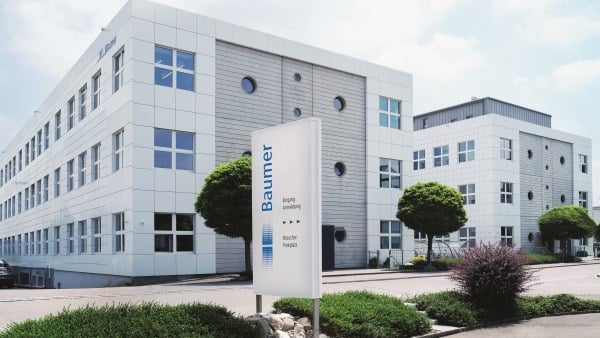01-jul-2019
High-speed quality inspection
How do you carry out quality inspections on ten million plastic parts per year? Until recently this was done manually, but now it has become an automated process thanks to the smart inspection system by AUMO. The automation specialist relies on ten Baumer CX cameras working as the “eyes” of the machine
10 cameras to test 10 million socket cover plates
It all starts with a blank sheet of paper. Next, the customer outlines what is needed; a quality inspection system, an automated assembly machine, or any other specific installation. The AUMO engineers elaborate on a concept and design and at the end of the process is the final all-in package, including system, servicing, commissioning and maintenance. “We only build individual solutions,” says Ben Rösler, project and sales manager and son of René Rösler, who founded the company in its present form in 1990, and has been the CEO ever since. Their main customers are in the automotive and supplier industry, aerospace, and plastics processing but also can be found in mechanical engineering, medical technology, and the semiconductor industry.
Simple parts, yet complex inspection
SchoPlast, a German state-owned company in the early 1970s and re-founded in 1992, delivers decades of experience. Being a well-established manufacturer of mainly thermosetting plastic parts for electrical installations, they asked AUMO to develop a quality inspection system for socket plates. Dozens of them can be found in everybody’s home today. The socket cover, attached fully visible outside the wall, is manufactured in large quantities and must undergo complex inspection, since the premium customer SchoPlast has extraordinarily high demands on quality. Quality requirements refer to dimensions and precise outer contours. Identifying even the smallest defects such as scratches and surface imperfections is particularly demanding. SchoPlast produces ten million socket plates per year, with all-manual inspection so far – a giant effort, which was the spark that got things moving to take the load off the people and automate the task. So SchoPlast approached AUMO to learn if they could make it an automated process.
AUMO could. Within the system than has been in operation at SchoPlast since April 2018, two socket plates per cycle are picked from the bin and placed next to each other on a complex conveying system. In the next step, the plates pass several inspection stations. All inspections tasks are image-based, except for two tactile operations to measure material thickness and so-called pot size. To do so, there are four measuring boxes hosting ten cameras in total and illumination units with ring lights as incident or transmitted light for surface illumination. Passing the boxes, the cover plates are automatically turned and positioned for backside inspection. As the final step in the inspection process, the socket plates are sorted according to good parts or defect type.
Open system architecture preferred
The ten Baumer cameras are integral to this successful automation solution. In which way? The first benefit is quite unspectacular: From the Baumer Vision Competence Center to AUMO, it’s only 25 minutes by car. Baumer has been using AUMO profile systems and components for the design of production and inspection stations, so they have known and trusted each other. But that is only half of the story. “We were looking for an open system with standardized lens connection and data interface to output gray images,” says Rösler. “Other manufacturers only offered complete systems which we found insufficient in terms of flexibility.”
The Baumer camera VCXU-53M with USB 3.0, lens connection 35 mm and 1.4 aperture was the perfect match. Integrating ON Semiconductor PYTHON 5.3 Megapixel Global Shutter sensors, the cameras deliver excellent image quality with up to 73 fps. In the SchoPlast application, the cameras acquire an image every 3.67 seconds at exposure times between 0.125 and 0.5 milliseconds. The camera data are delivered to two industrial PCs, which in parallel control illumination. The computers run specific AUMO-developed evaluation software. The results directly enter the SchoPlast quality management system. Results can be retrieved even years later for reasons of traceability in the event of frequent error occurrence at later points in time.
AUMO does not only use the Baumer VCXU-53M cameras for the SchoPlast inspection application. Baumer cameras do their jobs – contour inspections on objects – in two more applications at other customers. “We chose this camera because it has exactly what we need,” says Rösler.
Temperature under control
Among other features, the cameras have excellent temperature management capabilities. Prior to commissioning, there was concern about the cameras heating up too much and probably exceeding the maximum permissible operating temperature of 65 °C when being exposed to the “flash light inferno” inside the measuring boxes. However, the all-clear was given by the diagnostics of the continuously transmitted operating data of each camera. The maximum temperature reached was 56 °C. This eliminates the need for active cooling, which would have made the system even more complex and expensive.
“The SchoPlast project manager was very pleased and astonished by our clever solution,” says Rösler, and solves the secret behind it: “We don't just want to sell our solution; we always look at the customer's requirements from his point of view”.
Press download
-
High-speed quality inspection
-
Picture

